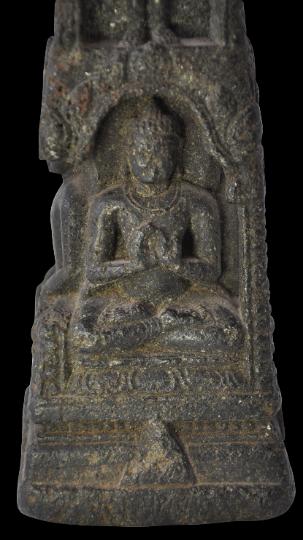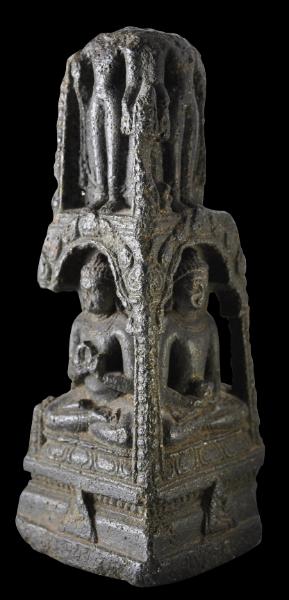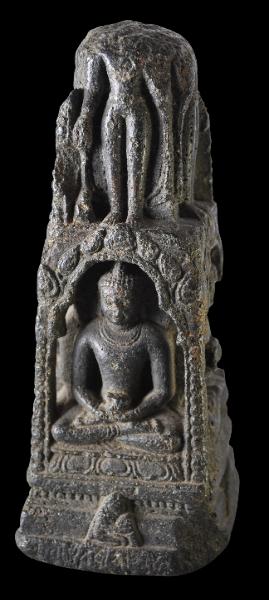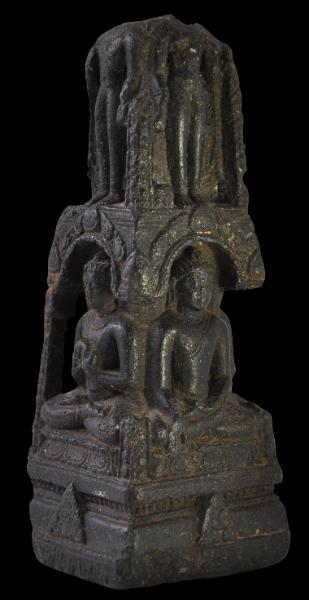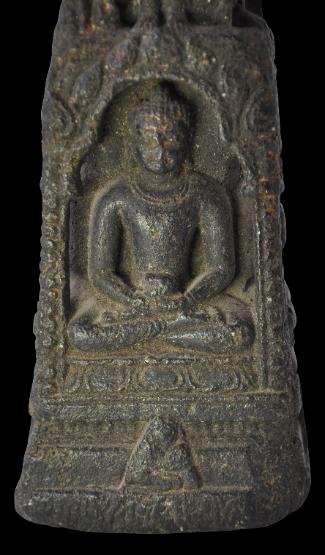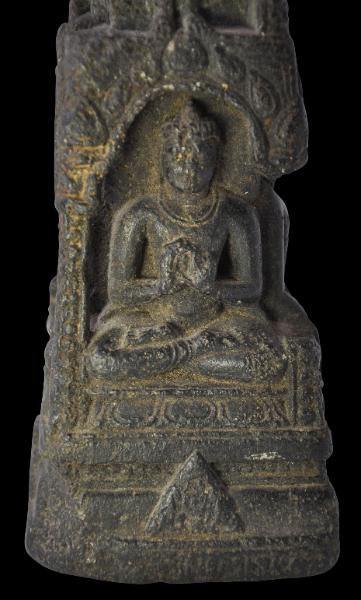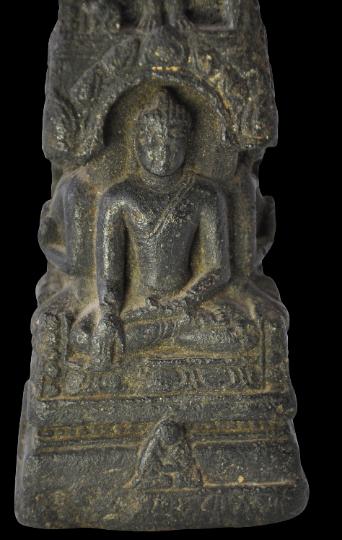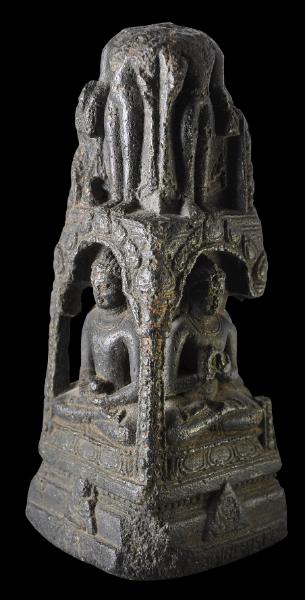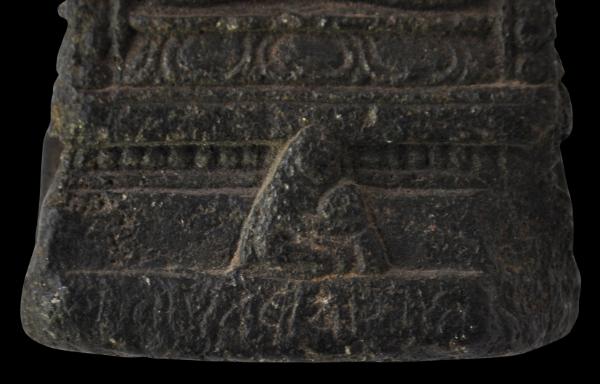
Pala Stone Stupa
Inscribed Black Basalt Pala Stupa Carved with Buddha Images
Bihar, Eastern India, possibly Nalanda
Pala Period, circa 10th century
height: 17.6cm, weight: 1,401g
This finely carved stupa segment sits on a square base and has four sides that narrow towards the top. It is carved on all sides with four Buddhas in trefoil arches, each with arms in various positions – two with hands in the turning-of-the-wheel-of-law gesture, one with hands in the lap holding a begging bowl, and one with the gesture of calling the earth to witness. Each is seated cross-legged on lotus petal cushions in the meditative posture. An upper, second tier is carved with four standing Buddhas, although the upper section of this tier no longer is present. Small kneeling attendants were carved in several or all of the upper niches although only two remain today.
All four sides of the base have engraved Sanskrit inscriptions, above which a carving of a kneeling disciple or attendant in triangular form is carved.
A dark chlorite frieze in the Norton Simon Museum and attributed to tenth century Bihar is carved with similar Buddhas in similar niches, although there are seven Buddhas and they sit in a row (see Pal, 2003, p. 177). Pal postulates that the frieze might have been part of a door frame. The frieze is also engraved with a Sanskrit insciption, the familar Buddhist creed beginning ‘
ye dharma‘. Pal suggests that the Norton Simon frieze stylistically relates to architectural elements from the ancient higher-learning centre of Nalanda is present-day Bihar which functioned from the fifth to the twelfth centuries, and may have been removed from there. Accordingly, a Nalanda provenance for the stupa element here also is possible.
Guy (2007, p. 77) illustrates a carved basalt Pala-period model of the Mahabodhi temple at Bodhgaya in the collection of the Victoria & Albert Museum. At just 12 centimetres in height, the model is very small, but it does suggest that the stupa element here might have come from a similar model, albeit a large example.
References
Guy, J., Indian Temple Sculpture, V&A Publications, 2007.
Pal, P.,
Art from the Indian Subcontinent: Asian Art at the Norton Simon Museum, Yale University Press, 2003.
Provenance
UK art market
Inventory no.: 1994
SOLD

